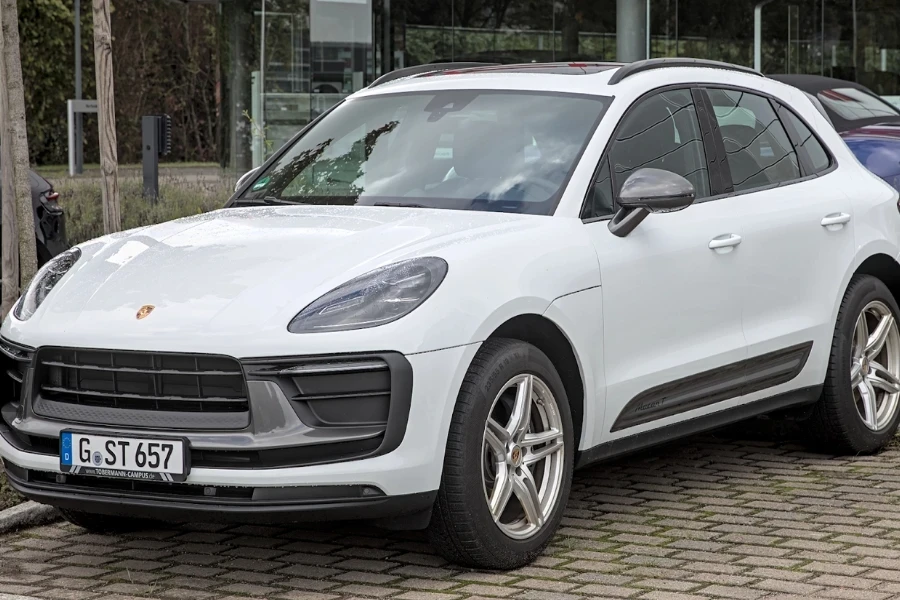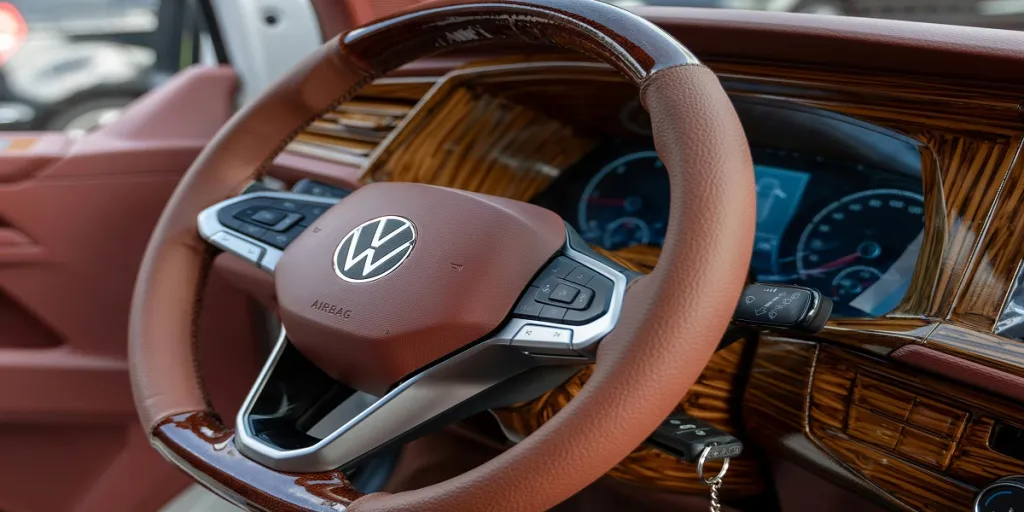Volkswagen is investing nearly $200 billion over the next five years into strengthening its electric vehicle (EV) market position. Despite a slight decline in overall delivery totals, Volkswagen remains optimistic after experiencing a 26% increase in 2022 BEV sales.
The company’s ambitious investments will focus on digitalization and electrification as it aims to transition to a digitalized automotive landscape while accelerating EV adoption. Volkswagen has numerous exciting releases coming up, like the ID.7 and Audi Q8 e-tron; part of its push to have every fifth vehicle sold globally to be fully electric by 2025.
The company has also started two platforms (with two others in the works) to host their EV lineups. The MEB platform was the first Volkswagen group EV platform, with the PPE and SSP platforms expected to replace it soon. Although JI was their second platform to be launched, it operates more as an independent architecture for Porsche and Audi EVs.
This article will explore Volkswagen Group’s MEB, J1, PPE, and SSP platforms and how they demonstrate the company’s commitment to making significant strides in the competitive EV market.
Table of Contents
What is the MEB platform?
What is the J1 platform?
How updated is the PPE platform?
What’s the future of the SSP?
Conclusion
What is the MEB platform?
The Modular Electric Drive Matrix (MEB) is a scalable Volkswagen platform specifically designed for electric vehicles. It also serves as the foundation for various electric models across various brands within the Volkswagen Group and its subsidiaries.
At the time of writing, the MEB platform supports nine core models, with Volkswagen Group and its subsidiaries actively producing eight of them. The following vehicles already have or will host the MEB platform:
- Volkswagen ID.3 (2019 – present)
- Volkswagen ID.4 (2020 – present)
- Skoda Enyaq IV (including Coupe variant) (2020 – present)
- Volkswagen ID.5 (2021 – present)
- Audi Q4 e-tron (Sportback variant included) (2021 – present)
- Cupra Born (2021 – present)
- Audi Q5 e-tron (2021 – present)
- Volkswagen ID.6 (2021- present)
- Volkswagen ID. Buzz (including Cargo variant) (2022 – present)
- Ford Explorer EV (commences 2023)
- Volkswagen ID.7 (commences 2023)
- Cupra Tavascan (commences 2024)
What are the characteristics of this platform?
Scalability
The MEB platform is highly scalable, enabling EV production across various segments and sizes. It can accommodate compact cars, sedans, SUVs, and larger vehicles like vans. This scalability ensures manufacturing flexibility and cost-efficiency.
Battery placement
The integrated battery pack sits flat on the vehicle’s floor in the MEB platform. Volkswagen calls this arrangement the “skateboard design.” This unique placement lowers the car’s center of gravity, making it more stable by improving handling. But that’s not all: it also creates more interior space for passengers and cargo.
Range and performance options
The MEB platform supports different battery sizes and powertrain configurations, allowing Volkswagen to provide various driving ranges and performance options. Regarding batteries, the platform can accommodate different capacities to meet specific market demands and offer options for shorter and long-range EVs.
In addition, it provides different performance options by supporting single-motor rear-wheel drive or dual-motor all-wheel drive setups.
Charging capabilities
MEB-based vehicles can support various charging standards and capabilities. Drivers can charge them using standard AC charging at home or at public charging stations. These cars also support DC fast charging for quicker charging times.
Indeed, the platform’s compatibility with multiple charging infrastructures enhances convenience and accessibility for EV owners.
Digital integration and connectivity
Out with analog and in with the digital! The MEB platform emphasizes digital integration and connectivity features. As a result, MEB-based vehicles enable the seamless integration of digital services, infotainment systems, and advanced driver-assistance systems (ADAS).
What’s more, these vehicles often incorporate extensive connectivity options, enabling over-the-air software updates, remote control functionalities, and other intelligent services.
What is the J1 platform?
In 2015, Porsche started developing the J1 platform, a modular architecture for high-performance electric vehicles. However, it wasn’t until 2019 that the platform was first used in the Porsche Taycan. The Audi e-tron GT then followed suit in 2020.
The J1 platform is relatively new but has already been well-received by critics and consumers. The Porsche Taycan received praise for its performance, range, and luxurious interior. Similarly, the Audi e-tron GT was on the fast track to consumer popularity, thanks to its similarly enjoyable driving experience at a more affordable price.
Unlike the MEB platform, it’s only these two models that host the J1 configuration. Nevertheless, experts expect more models to be fitted with the platform in future Porsche and Audi models, potentially helping to accelerate EV adoption in the luxury segment.
What are the J1 platform’s features?
High performance
Porsche designed the J1 platform to accommodate powerful electric motors, giving the J1-based vehicles excellent acceleration and handling. For instance, the Porsche Taycan can go from 0 to 60mph in 2.6 seconds, and has a 161mph top speed.
Long range
The J1 platform can handle large battery packs, giving its vehicles long driving ranges. While the Porsche Taycan boasts 201 miles on a single charge, the Audi e-tron GT can travel up to 238 miles – a more than 30% range increase.
Luxurious interior
The J1 platform boasts stunningly luxurious interiors, with the Porsche Taycan and Audi e-tron GT both being spacious and comfortable, with high-quality materials and finishes.
Additionally, the interiors of these vehicles also feature various advanced features, like heated/ventilated seats, panoramic sunroofs, and premium sound systems.
Active safety features
Porsche packed the JI platform with various safety features, like automatic emergency brakes, lane departure warning, and adaptive cruise control, helping to keep drivers safe and prevent accidents.
Fast charging
The JI platform supports up to 800 volts of electrical architecture, allowing faster charging speeds. For example, the Porsche Taycan can charge from 5 to 80% in 22.5 minutes.
How updated is the PPE platform?

The Premium Platform Electric (PPE) platform represents an exciting collaboration between Porsche and Audi that aims to deliver impressive electric vehicles. They are developing the platform in Ingolstadt and Weissach, and we expect to see the first model hit the market in 2023.
When Porsche and Audi announced this joint effort, they announced that three new model families would arise from the platform. Audi is taking the lead on two of these families, while Porsche heads the third project. The great thing about the PPE platform is that it allows for component-sharing among these models, which improves efficiency and better streamlines development.
The PPE platform will be the successor to the MLB platform, which Audi has used for their internal combustion engine models like the A4-A8 and Q5-Q8 series. The PPE platform is undoubtedly similar to its MEB and J1 counterparts, and is specifically designed for medium-sized and larger vehicles.
Currently, the Porsche Macan Electric and Audi A6 e-tron are the only electric vehicles confirmed for the PPE platform. However, exciting prospects are on the horizon, such as the anticipated release of the Porsche 718 GT4 after the platform’s launch in 2023.
What are the PPE platform’s features?
Highly digital
PPE-based EVs will have incredibly advanced digital capabilities. Volkswagen Group’s software company, CARIAD, is working on a new digital platform for all vehicles hosting the PPE platform.
CARIAD’S upcoming 1.2 software will herald a new infotainment system heavily influenced by the Android Automotive OS. This updated system will offer a unique experience tailored to each brand, ensuring they don’t feel alien to users.
Prismatic cell type support
Unlike its predecessors, the PPE platform-based models will feature prismatic cell battery pack modules. These cells are more versatile than round cells, which Audi used in the experimental R8 e-tron.
In addition to its compatibility with denser packaging, prismatic cells are more robust due to their aluminum housings.
System voltage and range
EVs under the PPE platform will be fitted with impressive battery packs that can hold up to 100kWh. While Porsche hasn’t provided details about their projected maximum range, Audi is aiming for their models to be able to achieve over 700km (435 miles) on a single charge.
Other good news is that these cars will have an 800-volt charge state, allowing for speedy charges. While they planned to offer an impressive 350kW charging state, charges will be limited to 270kW – still pretty fast!
Audi has mentioned that a 10-minute charge with a level 3 DC fast charger will provide about 300km of range, and it’ll take less than 25 minutes to charge from 5 to 80%.
What’s the future of the SSP?
The Scalable Systems Platform, or SSP, is an exciting car platform under development by Volkswagen Group. It’s part of their ambitious “New Auto” strategy, which aims to have a single platform for all their electric vehicles across different brands.
The Volkswagen Group announced the SSP platform in July 2021, and it is set to launch in 2026. They expect it to replace the current MEB and PPE platforms as well as Volkswagen’s internal combustion engine platforms.
One of the cool things we can expect from the SSP is its modular design. It will have a common platform with different modules, offering flexibility and adaptability. Also, Volkswagen isn’t looking to keep the platform to itself. Instead, they have plans to offer it to other care manufacturers.
Hence, we can look forward to seeing various electric cars built on the SSP. The cars expected to use the SSP platform include, but are not limited to:
- Volkswagen Trinity
- Audi Artemis
- Porsche Macan EV
What features should we expect with the SSP?
Scalability
The primary aim of the SSP is to be scalable, allowing it to work across different vehicles regardless of size, shape, and performance. Volkswagen plans to achieve this scalability through a modular architecture, making swapping or upgrading different components easier.
Efficiency
Although the platform promises various eye-catching features, the company expects it to use energy wisely as to minimize waste. They aim to do this by using lightweight materials, advanced aerodynamics, and intelligent powertrain management systems.
Advanced features
The SSP will also come packed with support for advanced features, like level 4 autonomous driving and over-the-air updates.
Conclusion
Volkswagen is gearing up for an electric vehicle overhaul and has all the resources it needs to do so. In 2022, Volkswagen Group delivered 572,100 electric vehicles, maintaining its position as the leader in the European BEV market.
Building on this success, Volkswagen has exciting plans for 2023 and beyond, introducing new models under its MEB, J1, PPE, and SSP platforms.




